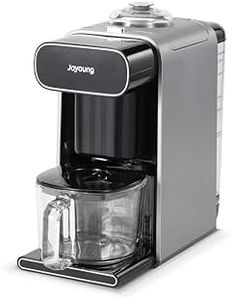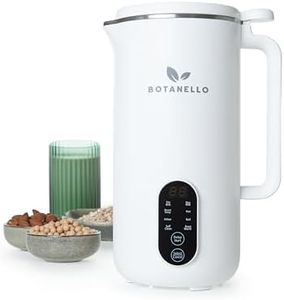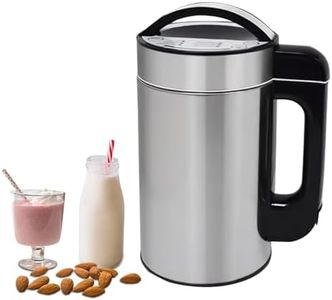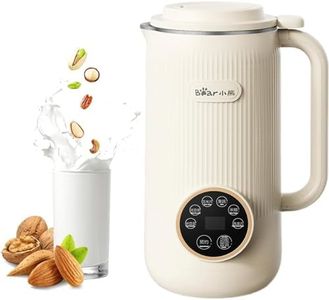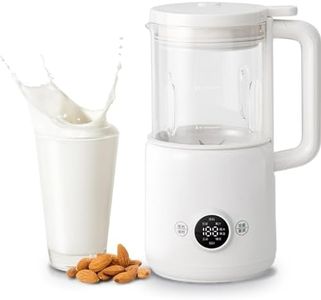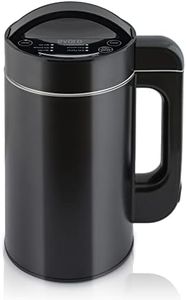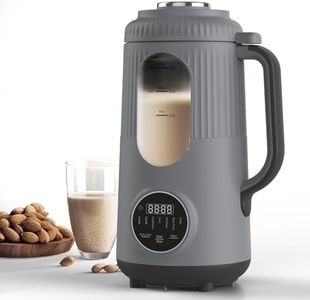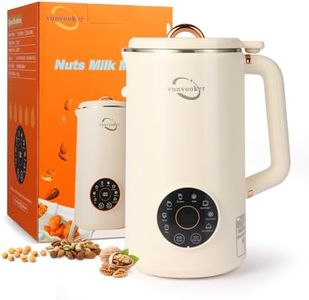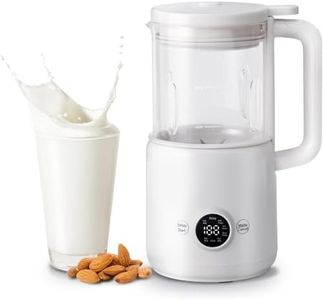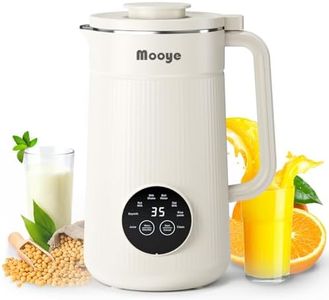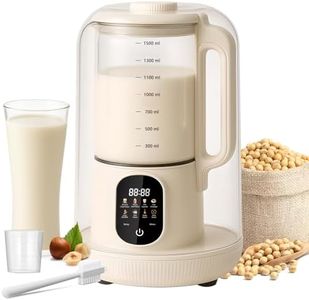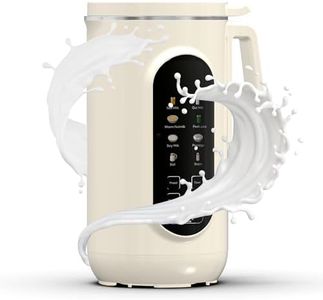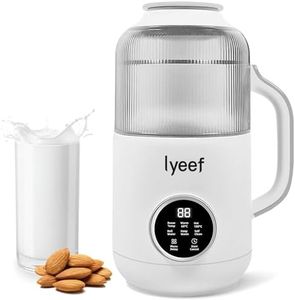We Use CookiesWe use cookies to enhance the security, performance,
functionality and for analytical and promotional activities. By continuing to browse this site you
are agreeing to our privacy policy
10 Best Soy Milk Makers
From leading brands and best sellers available on the web.Buying Guide for the Best Soy Milk Makers
Choosing a soy milk maker can make preparing fresh plant-based milk at home much easier, healthier, and more cost-effective. When picking the right one for you, it’s essential to focus on your lifestyle needs and how often you’ll use it. Think about the batch size you want, what types of milk or soups you want to make, and how much time you are willing to spend on preparation and cleaning. Understanding the main features of these machines will help you find a model that matches your kitchen habits and dietary preferences.CapacityCapacity refers to the amount of soy milk the appliance can make in one cycle. This is important because it determines whether the machine fits your consumption needs, whether you're serving just yourself or a family. Small-capacity machines are typically around 300-600 ml, ideal for singles or couples who want fresh milk every day without leftovers. Medium capacities (700-1200 ml) suit small families or those who want to prepare enough to last a couple of days. Large machines, which can make more than 1.2 liters, are best for bigger families or if you plan to use the soy milk for cooking as well. Think about how much soy milk you’ll use and choose a capacity that suits your daily or weekly needs without causing waste or requiring frequent batch-making.
Heating MethodSoy milk makers generally use either an external heating plate or an internal heating element to cook the soybeans during the soy milk making process. This spec is important as it affects how evenly the milk heats up and how easy the machine is to clean. Internal heating elements are often built into the wall, which can make cleaning trickier, but might offer even heating. External heating plates are easier to clean and may be more durable over time. If easy cleaning is a top priority, you might prefer models with external heating plates.
Filtration SystemThe filtration system determines whether your soy milk is ready to drink straight from the machine or if you’ll need to strain it separately. Some makers come with built-in filters (either fine mesh baskets or sieves) that separate milk from the pulp during the process. Others are filterless, requiring you to manually strain the milk after it is made. Filtered options are more convenient if you want smooth milk with little effort, while filterless machines are usually easier to clean and let you control the pulp texture. Your preference for texture and convenience will guide your filtration choice.
Program SettingsProgram settings refer to the automatic modes a soy milk maker offers, such as pre-set cycles for soy, almond, oat, rice milk, or even for soups and porridges. Having more settings can make the machine more versatile and easier to use for different recipes, which is useful if you enjoy experimenting or want options beyond just soy milk. Basic machines might have just one or two buttons, while advanced ones have multiple modes for various tasks. Choose a model with the settings that actually match what you plan to use it for most frequently.
Ease of CleaningThis specification points to how hard or easy it is to clean the soy milk maker after use. Since soy milk can create a lot of residue, machines with smooth, simple interiors, detachable components, and self-cleaning programs are much easier to maintain. If you dislike spending time on cleanup, look for models with these features. If you don’t mind a bit of scrubbing, a less advanced model may still fit your needs.
Noise LevelNoise level measures how loud the machine is during blending and heating. This can be important if you usually make soy milk early in the morning or late at night and don’t want to disturb others. Quieter machines make less than 65 decibels of noise, while others can be noticeably louder. If peace and quiet are a priority in your home, you may want to check this feature before making a decision.
